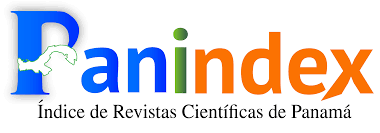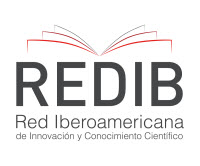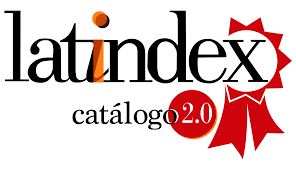Esta obra está bajo licencia internacional https://creativecommons.org/licenses/by-nc-sa/4.0/deed.es
La revista (y sus contenidos) emplean las licencias Creative Commons, específicamente la del tipo CC BY NC SA 4.0, la cual establece que “el beneficiario de la licencia tiene el derecho de copiar, distribuir, exhibir y representar la obra y hacer obras derivadas siempre y cuando reconozca y cite la obra de la forma especificada por el autor o el licenciante”. La licencia del tipo CC BY NC SA 4.0 contempla tres categorías,
- Atribución.
- No Comercialización de la obra.
- Compartir igual
Los lectores son libres de:
- Compartir — copiar y redistribuir el material en cualquier medio o formato
- Adaptar — remezclar, transformar y construir a partir del materialLa licenciante no puede revocar estas libertades en tanto usted siga los términos de la licencia
- Siempre y cuando se respeten y contemplen la atribución de autoría y la no comercialización del material.
Abstract
This paper reports on an exploratory study into the perception of using digital games and L2 willingness to communicate of English language learners. Forty-three participants divided into two groups completed a questionnaire on their perceived language competence as well as their position towards digital games. Then, they received thirty hours of English instruction that included the use of digital games. These games were designed to facilitate learning of new concepts being taught during regular class time while encouraging the use of the L2 orally. The participants received a second questionnaire after the treatment to assess their perception of the digital games and their effects on their speaking ability. The participants expressed to be more engaged in the digital gamified activities than in those that follow a more “traditional” approach. Most participants reported to have positive feelings towards the inclusion of these tools in their language instruction. However, the participants failed to see how their use of the oral language during these activities for communication increased. Thus, results indicate that while the use of digital games was perceived positively among the participants, it did not significantly increase their willingness to use oral communication in the L2. It is recommended that these activities be integrated in the language class as part of regular instruction to add variety, but their effects on improving the speaking ability remain inconclusive.
References
Cameron, D. (2014). Willingness to communicate in English as a second language as a stable trait or context-influenced Variable: Case studies of Iranian migrants to New Zealand. Australian Review of Applied Linguistics 36(2),177-196. Retrieved from https://www.researchgate.net/publication/289329463_Willingness_to_communicate_in_English_as_a_second_language_as_a_stable_trait_or_context-influenced_variable_Case_studies_of_Iranian_migrants_to_New_Zealand
Chik, A. (2014). Digital gaming and language learning: Autonomy and community. Language Learning & Technology 18(2), 85–100. Retrieved from http://llt.msu.edu/issues/june2014/chik.pdf
Dornyei, Z., & Ryan, S. (2015). The psychology of the language Learner revisited. Abingdon, United Kingdom: Routledge.
Godwin-Jones, R. (2014). Games in language learning: Opportunities and challenges. Language Learning & Technology 18(2), 9–19 Retrieved from http://llt.msu.edu/issues/june2014/emerging.pdf
Jackson, R. R. (2011). How to motivate reluctant learners. Washington, DC: Mindsteps.
Knell, E., & Chi, Y. (2012). The Roles of Motivation, Affective Attitudes, and Willingness to Communicate Among Chinese Students in Early English Immersion Programs. International Education, 41(2), 66-87. Retrieved from http://trace.tennessee.edu/internationaleducation/vol41/iss2/5
Öz, Demirezen, and Pourfeiz, (2014). Willingness to communicate of EFL learners in Turkish context. Learning and Individual Differences 15(37):269-275. Retrieved from: https:// www.researchgate.net/ publication/ 270913700_Willingness_to_communicate_of_EFL_learners_in_Turkish_ context
Peng, J. E. (2006). Willingness to communicate in an L2 and integrative motivation among college students in an intensive English language program in China. University of Sydney Papers in TESOL, 2, 33-59. Retrieved from https://www.researchgate.net/publication/237651445_ Willingness_to_Communicate_in_an_L2_and_Integrative_Motivation_among_College_Students_in_an_Intensive_English_Language_Program_in_China
Reinders, H., & Wattana, S. (2014). Can I say something? The effects of digital game play on willingness to communicate. Language Learning & Technology, 18(2), 101–123. Retrieved from http://llt.msu.edu/issues/june2014/reinderswattana.pdf
Schaaf, R. (2012). Does digital-based learning improve student time-on-task behavior and engagement in comparison to alternative instructional strategies? Canadian Journal of Action Research, 12(1), 50-64. Retrieved from https://www.academia.edu/7123886/does_ digital_game-based_learning_improve_student_time-on-ask_behavior_and_engagement_
in_comparison _to _alternative _instructional _strategies
Sykes, J. M. (October, 2013). Technology: “Just” playing games? A look at the use of digital games for language learning. The Language Educator, 8(5), 832-35.
Wright, A., Betteridge, D., & Buckby, M. (2006). Games for language learning (3rd ed.). New York, NY: Cambridge University Press.













